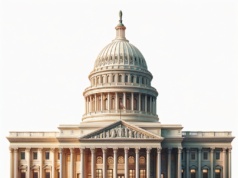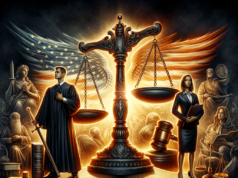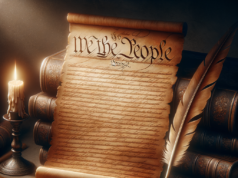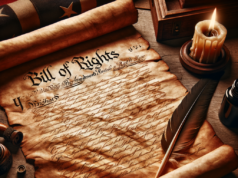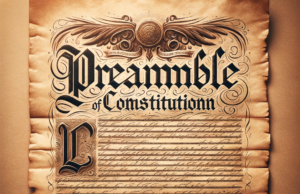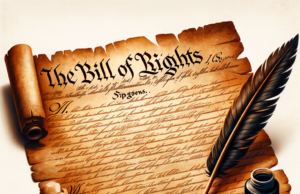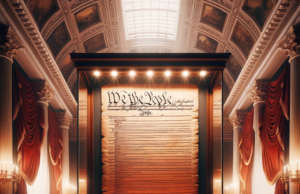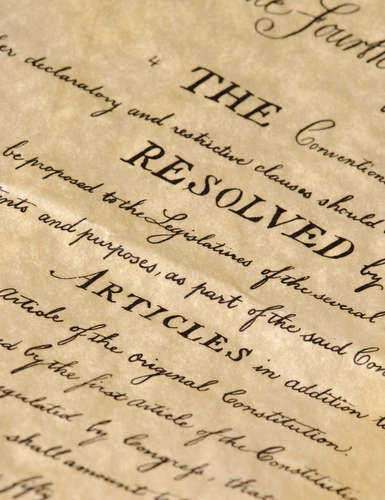
Constitutional Government: The Foundation of Modern Democracy
Constitutional government is a fundamental concept in modern democracies across the world. It represents a system of governance where a constitution, often written, serves as the supreme law of the land, defining the structure of government, the rights and responsibilities of citizens, and the limits of governmental power. In this article, we will explore the key principles and characteristics of constitutional government and its significance in promoting democracy and the rule of law.
Key Principles of Constitutional Government
1. Rule of Law: Constitutional government is characterized by the rule of law, meaning that all individuals and institutions, including the government itself, are subject to and accountable under the law. No one is above the law, and the legal system provides a framework for resolving disputes and upholding justice.
2. Limited Government: A central tenet of constitutional government is the idea of limited government. The constitution delineates the powers and functions of each branch of government, ensuring that they operate within defined boundaries and do not exceed their authority. This prevents the abuse of power and protects individual rights.
3. Separation of Powers: Constitutional governments typically employ the separation of powers, dividing the government into distinct branches, such as the executive, legislative, and judicial branches. Each branch has its own responsibilities and functions, preventing any one branch from consolidating too much power.
4. Protection of Individual Rights: Constitutional governments safeguard the rights and liberties of citizens. Constitutions often include a Bill of Rights or a similar set of provisions that enumerate and protect individual freedoms, such as freedom of speech, religion, and assembly, as well as due process and the right to a fair trial.
5. Checks and Balances: The separation of powers is reinforced by checks and balances. Each branch of government has the ability to monitor and influence the actions of the other branches, preventing any one branch from becoming too dominant. This system promotes accountability and prevents tyranny.
Significance of Constitutional Government
1. Preservation of Democracy: Constitutional government is a cornerstone of democratic societies. It ensures that the will of the people, as expressed through fair and regular elections, is respected while also safeguarding minority rights from potential abuses of majority rule.
2. Stability and Predictability: Constitutions provide stability and predictability in governance. They outline the rules and procedures for decision-making and governance, which helps maintain order and continuity even in times of political change.
3. Protection of Human Rights: Constitutional governments are dedicated to the protection of human rights. The constitution serves as a shield against government overreach, ensuring that individual rights are respected and upheld.
4. Accountability: Constitutional governments emphasize accountability at all levels of government. Elected officials are accountable to the constitution and, by extension, to the people they serve. This accountability reduces corruption and fosters transparency.
5. Legal Framework for Dispute Resolution: The rule of law and the presence of a constitution provide a legal framework for resolving disputes and conflicts, both within the government and in society at large. This promotes peaceful conflict resolution and social cohesion.
Examples of Constitutional Governments
Many countries around the world operate under constitutional governments, each with its own unique constitution and system of governance. Prominent examples include:
1. United States: The U.S. Constitution, adopted in 1787, serves as one of the world’s oldest written constitutions. It establishes a federal system of government with three branches and a Bill of Rights protecting individual liberties.
2. Germany: Germany operates under a federal constitutional republic with a Basic Law (Grundgesetz) as its constitution. It features a parliamentary system and a strong emphasis on protecting human rights.
3. Japan: Japan has a constitutional monarchy with the Emperor as a symbolic figurehead. The post-World War II Japanese Constitution, also known as the “Constitution of Japan” or “Postwar Constitution,” guarantees civil liberties and democratic governance.
4. South Africa: South Africa’s post-apartheid constitution, adopted in 1996, is renowned for its emphasis on equality and human rights. It established a democratic, multiracial government.
In conclusion, constitutional government represents a vital pillar of modern democracy. It provides the framework for democratic governance, the protection of individual rights, and the prevention of tyranny. While the specific form and content of constitutions may vary from one country to another, the core principles of the rule of law, limited government, separation of powers, and individual rights remain universal in constitutional systems around the world.
Shortly after the establishment of the Articles of Confederation, a variance in sentiment in regards to varying the legislative model set forth in its contents. Both citizens of the United States of America, as well as various political figureheads, began to develop their own personal ideology in the spectrum of the gubernatorial model that was put in place.
On one hand, many of the smaller states of the Union enjoyed their respective sovereign existence to which they felt they were entitled. Regardless of their size and population, they were able to maintain an equal amount of legislative power as their larger counterparts.
In contrast to the prior monarchical model under which the colonists lived, many citizens of the United States felt that a central government that was subservient to the individual states was preferable to even the mere possibility of the existence of a totalitarian government. Furthermore, the freedom to exist without taxation allowed them to begin to cultivate themselves on a grander level; unaffected by any perceived whim or matter that existed beyond their respective borders.
On the other hand, political groups such as the Federalists vehemently opposed the role, and respective legislative power, allowed the central Government. They maintained that the lack of governmental jurisdiction coupled with inaccessibility to successfully pass legislation on a national level rendered an abuse of power on the part of the individual states, who at the time were acting as sovereign entities.
In addition, the central government’s inability to enforce taxation – albeit a presumably just and fair taxation process – was propelling the financial state of the United States of America into insolvency. Due in part to the disallowing enforcement of taxation imparted on the central government, which existed in tandem with a myriad of expenses incurred from national programs such as the upkeep of a military and a postal service, the central Government was forced to print money devoid of substantial financial backing in order to satisfy its debts.
As the central government began to print money wildly, the value of currency recessed, which prompted monetary inflation on a national scale. Larger states, which oftentimes were comprised of larger populations, were not entitled to additional funding towards the maintenance within their respective State borders. The State of New York was only allowed the precise amount of funding that was allowed to the State of Rhode Island. This occurred isolated from the fact that not only the population of the State of New York but also its land area, dwarfed that of Rhode Island.
The existence of the United States of America was quickly reaching a critical mass. The onset of financial insolvency had spawned various citizen-led rebellions, in addition to a refusal on the part of foreign nations to engage in trade relations with the thirteen states of the Union. Although a novel endeavor upon its inception, a majority of people maintained that the Articles of Confederation and its proposed system of government had proven to be unstable and dysfunctional, which unavoidably thrust the citizens of the United States of America towards a Constitutional governmental model.





